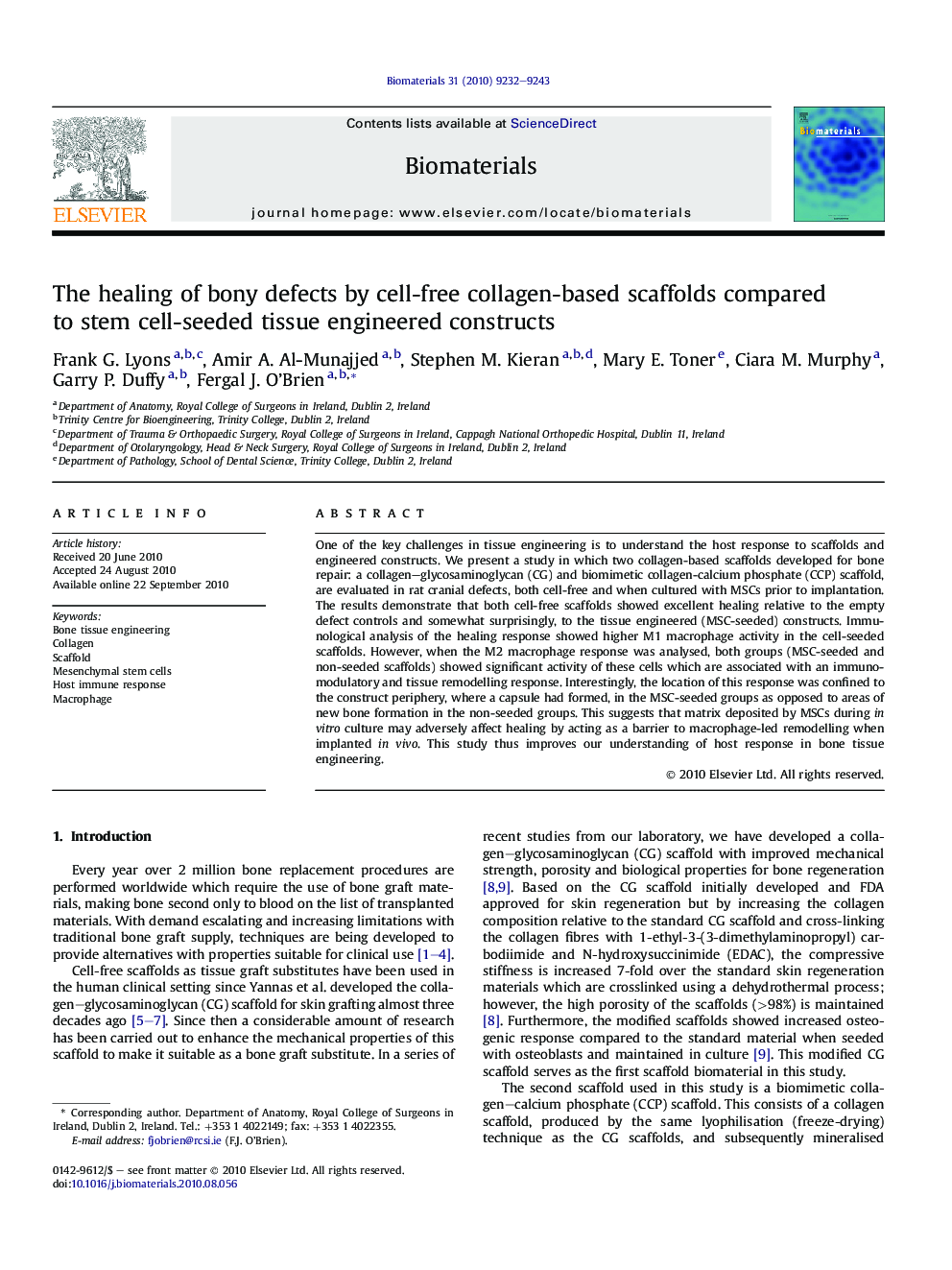| Article ID | Journal | Published Year | Pages | File Type |
|---|---|---|---|---|
| 8542 | Biomaterials | 2010 | 12 Pages |
One of the key challenges in tissue engineering is to understand the host response to scaffolds and engineered constructs. We present a study in which two collagen-based scaffolds developed for bone repair: a collagen–glycosaminoglycan (CG) and biomimetic collagen-calcium phosphate (CCP) scaffold, are evaluated in rat cranial defects, both cell-free and when cultured with MSCs prior to implantation. The results demonstrate that both cell-free scaffolds showed excellent healing relative to the empty defect controls and somewhat surprisingly, to the tissue engineered (MSC-seeded) constructs. Immunological analysis of the healing response showed higher M1 macrophage activity in the cell-seeded scaffolds. However, when the M2 macrophage response was analysed, both groups (MSC-seeded and non-seeded scaffolds) showed significant activity of these cells which are associated with an immunomodulatory and tissue remodelling response. Interestingly, the location of this response was confined to the construct periphery, where a capsule had formed, in the MSC-seeded groups as opposed to areas of new bone formation in the non-seeded groups. This suggests that matrix deposited by MSCs during in vitro culture may adversely affect healing by acting as a barrier to macrophage-led remodelling when implanted in vivo. This study thus improves our understanding of host response in bone tissue engineering.
